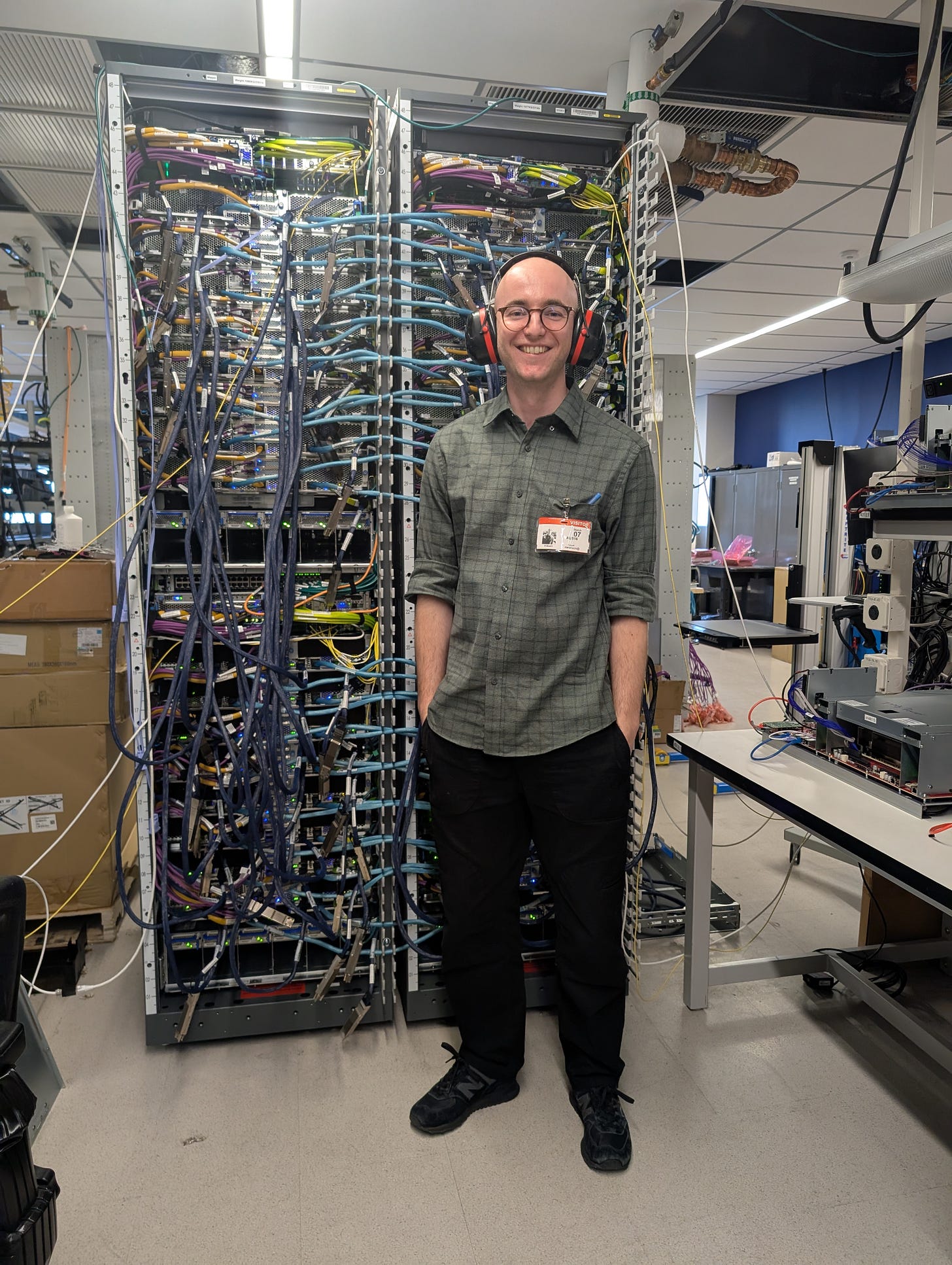Amazon’s Effort to Beat OpenAI’s ‘Stargate’ Project
Tech companies are cashing in their chips in the global AI infrastructure race
I was in Austin, Texas, recently for South by Southwest. I was there to speak on a panel about tech whistleblowing, which you can watch here, if you’re interested.
But while I was in town, I also got a rare chance to visit the lab where Amazon is designing the AI chips at the heart of its multi-billion dollar effort to compete with Microsoft, OpenAI, Google and Meta.
Each of these companies is currently spending the equivalent cost of several Manhattan Projects in a secretive race to build huge datacenters full of AI chips.
The most visible of these is OpenAI's $100 billion "Stargate" project, announced by Trump at the White House in January. But Amazon says its version, called Project Rainier, will be even bigger.
I came away thinking just how easy it is to forget how vast the computational infrastructure behind AI really is.
As I write in TIME:
After donning ear protection and swiping his card to enter a secure room, Sinno proudly displays a set of finished Trainium 2 [chips], which he helped design, operating the way they normally would in a datacenter. He must shout to be heard over the cacophony of whirring fans that whisk hot air, warmed by these chips’ insatiable demand for energy, into the building’s air conditioning system. Each chip can fit easily into the palm of Sinno’s hand, but the computational infrastructure that surrounds them—motherboards, memory, data cables, fans, heatsinks, transistors, power-supplies—means this rack of just 64 chips towers over him, drowning out his voice.
Large as this unit may be, it’s only a miniaturized simulacrum of the chips’ natural habitat. Soon thousands of these fridge-sized supercomputers will be wheeled into several undisclosed locations in the U.S. and connected together to form “Project Rainier”—one of the largest datacenter clusters ever built anywhere in the world, named after the giant mountain that looms over Amazon’s Seattle headquarters.
My piece, just published, looks at the stakes of this escalating race. It also explores the relationship between Amazon and Anthropic, the AI company that will use Rainier to train its next generation of models. I hope you’ll give it a read!
What else I’ve written
How Those Studio Ghibli Memes Are a Sign of OpenAI’s Trump-Era Shift
All those Studio Ghibli-style memes that were everywhere last week? Sure, they were going viral because of a ChatGPT update. But another factor fuelling their spread was that OpenAI also relaxed some of its content policies — which allowed users to easily generate images of 9/11, the murder of George Floyd, and Hitler. The White House even used ChatGPT to generate an image of an ICE officer arresting an alleged illegal immigrant. It all came as OpenAI attempts to woo the Trump Administration, senior figures inside which have railed against what they perceive as “woke AI”.
How This Tool Could Decode AI’s Inner Mysteries
Nobody really knows how large language models answer questions. Their neural networks are “grown,” rather than hand-coded like the computer programs of old; look inside them, and all you’ll see is a ton of decimal point numbers. This is a key reason why AI sometimes acts in unpredictable ways. But researchers at Anthropic are making progress in translating those numbers, and last week published a paper outlining some rudimentary algorithms they’d discovered inside their model Claude. I got an early look.





